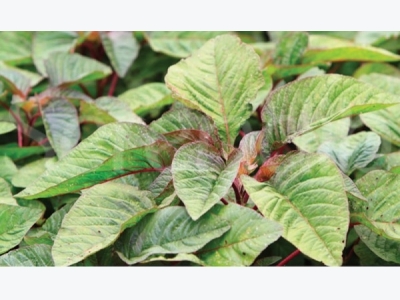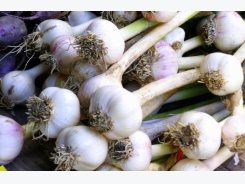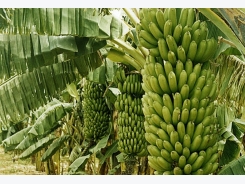Amaranth Farming Information Guide

Introduction to Amaranth Farming:- Amaranthus or Amaranth or Amaranths is one of the oldest warm climate leafy vegetable crops grown since centuries. At present, Amaranth is extensively grown as a green, leafy vegetable in many temperate and tropical regions in the world. When it comes to plant description, it is erect and spreading annuals with a rough appearance. Amaranth is grown for its green leaves and grains. Even these plants can be grown as ornamental purpose. Most of the Amaranthus species are originated in India or Indo-China or South East Asia region and spread across the world. However, it is produced and used as a grain or leafy vegetable in India, Mexico, China, Southeast Asia Regions, the
Andean highlands in South America and the United States. Farmers can safely bet on this crop cultivation as demand is very good in domestic markets for daily consumption. By following proper crop cultivation practices, one can get decent profits in Amaranth farming. To increase food security and reducing malnutrition in the current situation, encouraging the cultivation of Amaranth should be carried out. One can grow these plants in backyards, pots, containers or even terrace with proper soil and irrigation.
Commercial cultivation of Amaranth can be practiced in controlled environments such as polyhouse and greenhouse. The cultivation practices of Amaranthus depends on the crop is intended for (leaves or grains).

Growing Amaranth for Grains.
Scientific Name or Botanical Name of Amaranth:- Amaranthus spp.
Genus of Amaranth:- Amaranthus L.
Family Name of Amaranth:- Amaranthaceae. Amaranth Farming – Common Names of Amaranth:- Chaulai (Hindi, India), Pflanzengattung (German), Amarant (Dutch), Амарант (Mongolian), Αμάρανθος (Greek), Latte(Nepali), 아마란스 (Korean), Amarant (Bosnian), Amaranto (Spanish), Амарант (Bulgarian), Yin choi (Chinese), Amaranto (Italian), Phak khom (Thai), Chi Dền (Vietnamese), Santousai (Japanese), Amarante (Romanian), Laskavec (Czech), Amaranter (Swedish), Disznóparéj (Hungarian), Pokok Bayam (Malay), 莧菜 (Taiwanese), Amarants (Latvian), Kulitis (Filipino), Amarante (French).
Amaranth Farming – Health Benefits of Amaranth:- The following are some of the health benefits of Amaranthus

Amaranth Health Benefits.
- Amaranth leaves are good source of protein.
- Amaranth leaves are good source of Antioxidants.
- Amaranth leaves are good for bone development.
- Amaranth leaves are good for digestive health.
- Amaranth leaves are good for heart health.
- Amaranth leaves are good for eye health.
- Amaranth leaves are good for preventing from birth defects.
- Amaranth leaves are good for weight loss.
- Amaranth leaves are good for hair health.
- Amaranth leaves are good for strengthening blood vessel walls.
Cultivars (Varieties) of Amaranth:- Some of the popular cultivars Amaranthus include; Amaranthus cruentus, A. dubius, A. blitum, A. hybridus, A. spinosus, A. tricolor, A. mangostanus, A. caudatus, and A. thunbergii. Badi Chauli,Chhoti Chauli, CO-I, CO-2, CO-3, CO-4, CO-5, Lal Sag, Pusa Kiran, Pusa Lal Chaulai,Pusa Kirti are some of the Indian varieties grown.
Climate Requirement for Amaranth Farming:- Amaranthus is a warm season crop mostly grown in hot and humid regions. This crop is also widely distributed in both tropical and sub-tropical regions of the world. Leaf Amaranthus crop can be grown throughout the year in tropics and in autumn, spring and summer seasons in temperate regions. For better germination percentage, this crop requires soil temperatures of between 18 °C and 25 °C and air temperature above 25 °C for optimum growth. Cooler temperatures and frost conditions will result in decreased yield of produce.
Soil Requirement for Amaranth Farming:- Soil plays major role in getting higher yield of any crop. Amaranth can be grown in most of the soils. However, well-drained loamy soils rich in organic matter are best suited for its cultivation. The ideal soil pH range of Amaranth crop is about 5.5 to 7.5. Commercial farmers should go for soil test for finding the soil fertility. Any nutrient or micro-nutrient deficiencies in the soil should be supplemented based on the test result.
Land Preparation for Amaranth Farming:- Land should be prepared to a fine tilth stage by thorough ploughing and cross harrowing. Well decomposed farm yard manure (FMY) of 25 tonnes per 1 hectare land should be applied at the time of final ploughing. Remove any weeds from previous crops and form any irrigation channels for draining excess water.
Propagation in Amaranth Farming:- Propagation of Amaranthus crop is done be seeds.

Amaranth Seeds.
Seed Rate, Sowing and Spacing in Amaranth Farming:- The crop sowing can be done throughout the year in regions with enough irrigation supply. It takes about 2 to 2.5 kg/ ha seeds for direct sowing in the field. As Amaranth seeds are thinner in nature they should be sown shallow, about 1.5 cm deep, mixed with fine sand for evenly distribution. The seeds should be sown by broadcasting or drilling method inlines of 20-25 cm spacing. This will vary from variety to variety. Give light irrigation just before sowing the seeds to keep the field moist and make the germination process quick. In some areas even this crop is transplanted from nursery beds.
Irrigation in Amaranth Farming:- Amaranthus crop is considered as drought-tolerant when compared to other leafy vegetables crops. However irrigation is required at critical stages of growth. This crop does not tolerate water-logging conditions hence make sure to select the well-drained soil for good crop growth and yield. Irrigation frequency depends on soil moisture condition and climate. In summer hot days, it requires irrigation at an interval of 3 to 4 days.
Manures and Fertilizers in Amaranth Farming:– This leafy vegetable crop responds very well to manures and fertilizers due to nature of heavy feeding crop. It is recommended to apply 25 tonnes of well-decomposed farm yard manure (FMY) at the time of land preparation. Other fertilizers such as Nitrogen, Phosphorus and Potash should be applied as basal dose in the ratio of 50 kg:50 kg:20 kg per 1 hectare crop. In case of clipping type of Amaranthus, a higher fertilizer ratio of Nitrogen, Phosphorus and Potash should be applied in the ration of 75 kg:25 kg: 25 kg/ha. Foliar spray of 1% urea or diluted cow urine at every harvest is good for promoting further growth and for high yield.
Intercultural Operations in Amaranth Farming:- Weed free field is very important for crop growing because it makes the crop to grow healthy, reduce number of irrigations and fertilizers consumption. Amaranth is a short duration and shallow rooted crop and 2 weeding operations and light hoeing is well enough to control weeds or any un-wanted plants in the crop. Generally, carrying hoeing between the rows not only control weeds but also reduces the frequency of irrigations.

Growing Amaranthus in Pot.
Pests and Diseases in Amaranth Farming:- Premature flowering is a serious problem in cultivation of amaranth. Deficiency of Nitrogen, extreme high temperatures of soil and poor soil aeration are main reasons for premature flowering or bolting. Leaf blight and white rust are most common pests and diseases found in Amaranth farming. Leaf blight disease is the most severe during rainy season. The disease symptoms include appearance of white and irregular spots on leaves. To control this, avoid splash irrigation and spray Mancozeb @ 4grams/liter of cow dung supernatant as fine droplets. Apart from this, selecting disease resistant variety is also important.
Note: Your local Horticulture is a good source for finding suitable solutions for controlling pests and diseases in Amaranth farming.
Harvest and Yield in Amaranth Farming:- Usually the Amaranthus leaves will be ready for picking after 5 weeks to 8 weeks after sowing. Maturity of the crop may depend on cultivar. Harvest the crop in early hours by pulling fully grown plants along with roots at 30, 45 and 55 days after sowing. Washout the roots and bundle them to send them to local vegetable markets. If you choose to have multi-cut, first clipping should be done at 30 to 35 days after sowing. Subsequent cuttings should be done at weekly interval or based on re-generation of leaves.
Yield of crop depends on many factors like cultivar, age of the plant, soil type, irrigation, and climate and agriculture practices. On an average, one can obtain under ideal farming conditions, green leaves of 100- 120 quintals/ha and seed production of 200-225 kg/ ha.
Amaranth Farming – Marketing of Amaranth:- Contact any whole sale agent or commission agent or fruit processing company for bulk purchase.
Cost and Profits in Amaranth Farming:- Cost and Profit depends on many factors like local labour charges, soil, irrigation, climate, current market price and cultivation practices. On an average, 1 acre of amaranth cultivation cost around $100 to $200 including transportation. One can expect gross returns of $400 to $700/acre.
Có thể bạn quan tâm
Phần mềm

Phối trộn thức ăn chăn nuôi

Pha dung dịch thủy canh

Định mức cho tôm ăn

Phối trộn phân bón NPK

Xác định tỷ lệ tôm sống

Chuyển đổi đơn vị phân bón

Xác định công suất sục khí

Chuyển đổi đơn vị tôm

Tính diện tích nhà kính

Tính thể tích ao hồ



 Coffee Cultivation Information Guide
Coffee Cultivation Information Guide  Banana Farming Information Guide
Banana Farming Information Guide